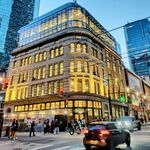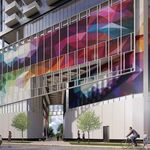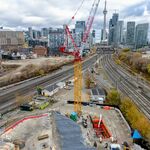"perfect place to raise your kids? You get what you pay for my friend."
Once again, you're ignoring the fact that the east and west ends of Toronto are perhaps the most affordable places to live in the entire GTA. I know that the area between Bathurst and the DVP/404 is really expensive, but it's not the only place worth living in. But if you have the money to live in Markham, go for it.
"It's rather comforting to know that half of the people won't have to cross an arterial road, tough luck for the other half, however."
I'm sorry, but crossing arterials is not tough. Crossing at Bay & Bloor at 5pm...now that can be a bit more risky.
Besides, regarding comment on whether people need to run to the convenience store - isn't that the whole argument anyways - that spontaneity of living is diminished for those who doesn't drive or are otherwise restricted to other modes of transporation in the suburbs?"
I don't really disagree with you, but the spontaneity issue has more to do with the character of land use in the suburbs, not the mode of transportation - you can walk or cycle or take a bus or even drive for 10 minutes in any direction and not come across anything except houses and occasional, identical strip malls.
"It's a ballpark figure (i.e. short) - I am a fast walker and I can barely across it within the allocated time. Imagine someone who a slower walker (say, an adult with a child or two, pulling along a stroller, or the elderly) doing the same? And what happens during winter, if there is accumulation? You might argue one can do a 2-staged crossing, but there were no accomodation for that at the median. The point is - you can't take the healthiest segment of the population and assume everyone in society will have an equally easy time at it."
I'd really like to see this road that seems to be wider than the 401.




